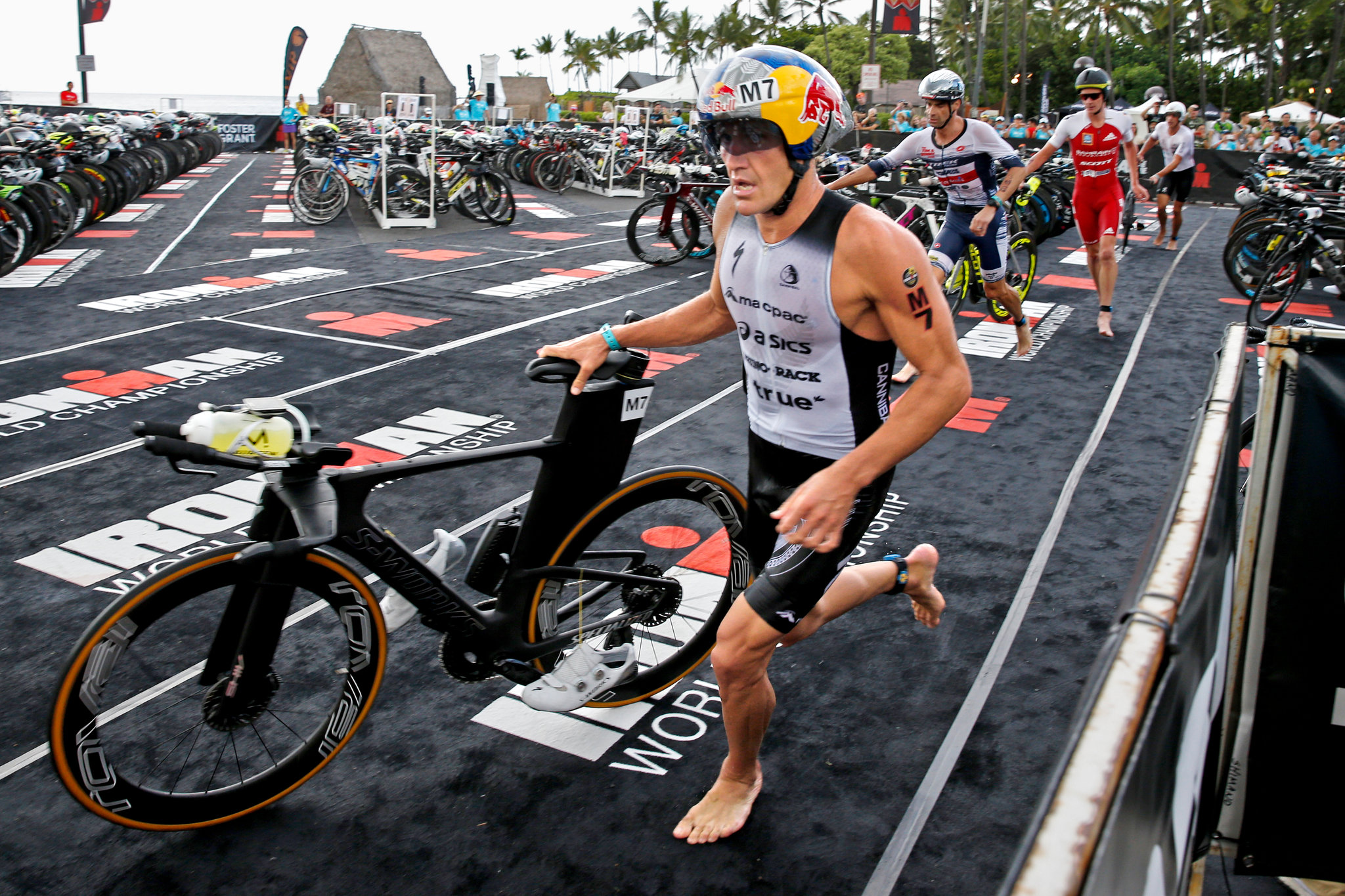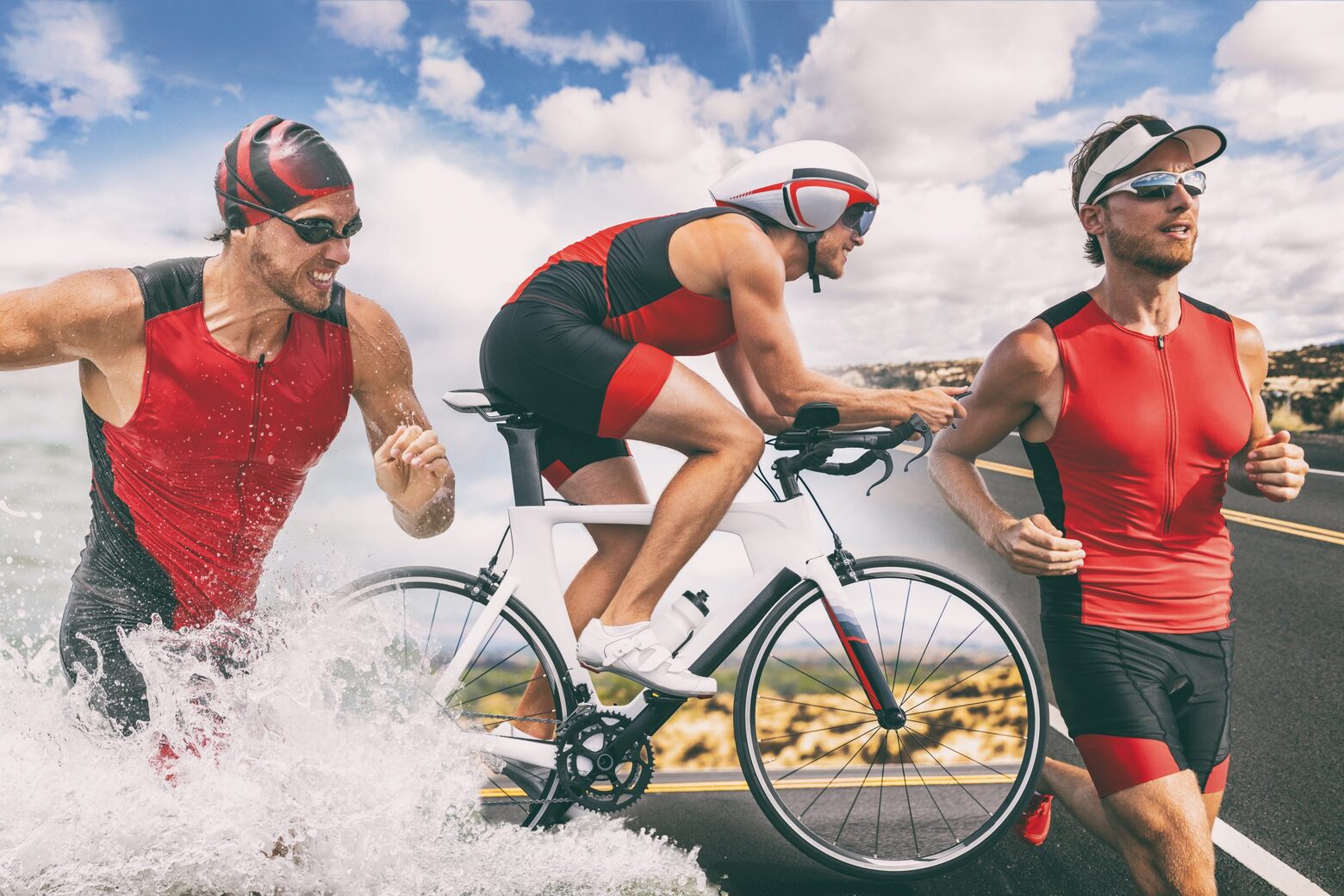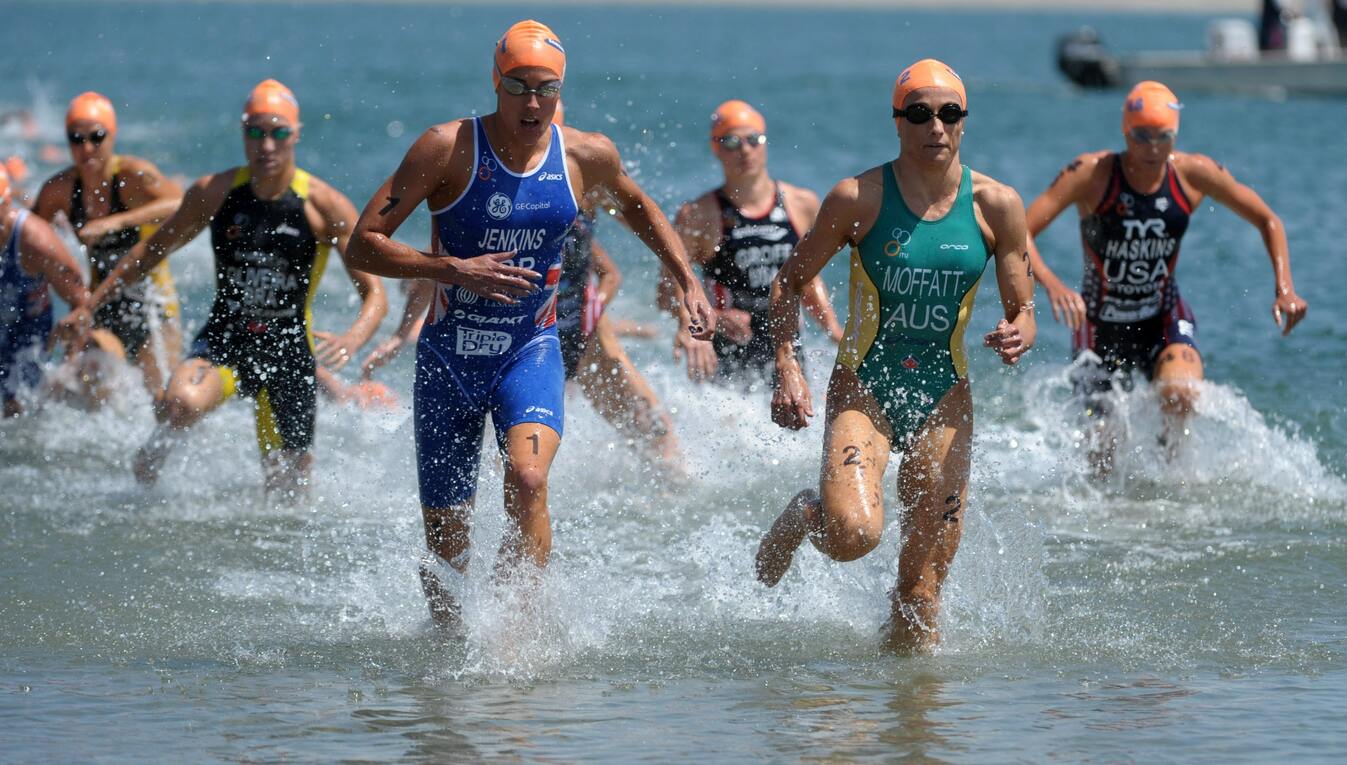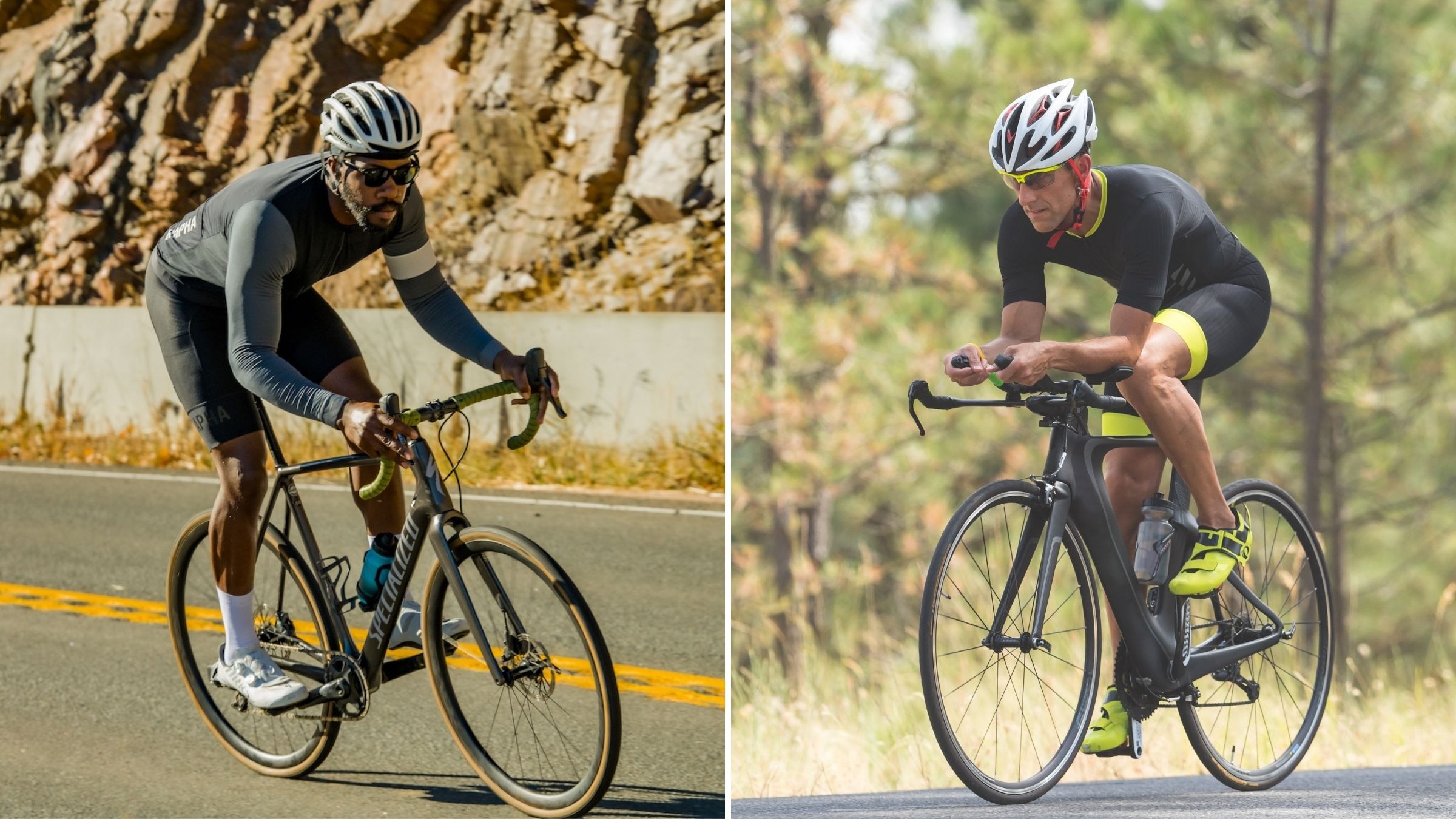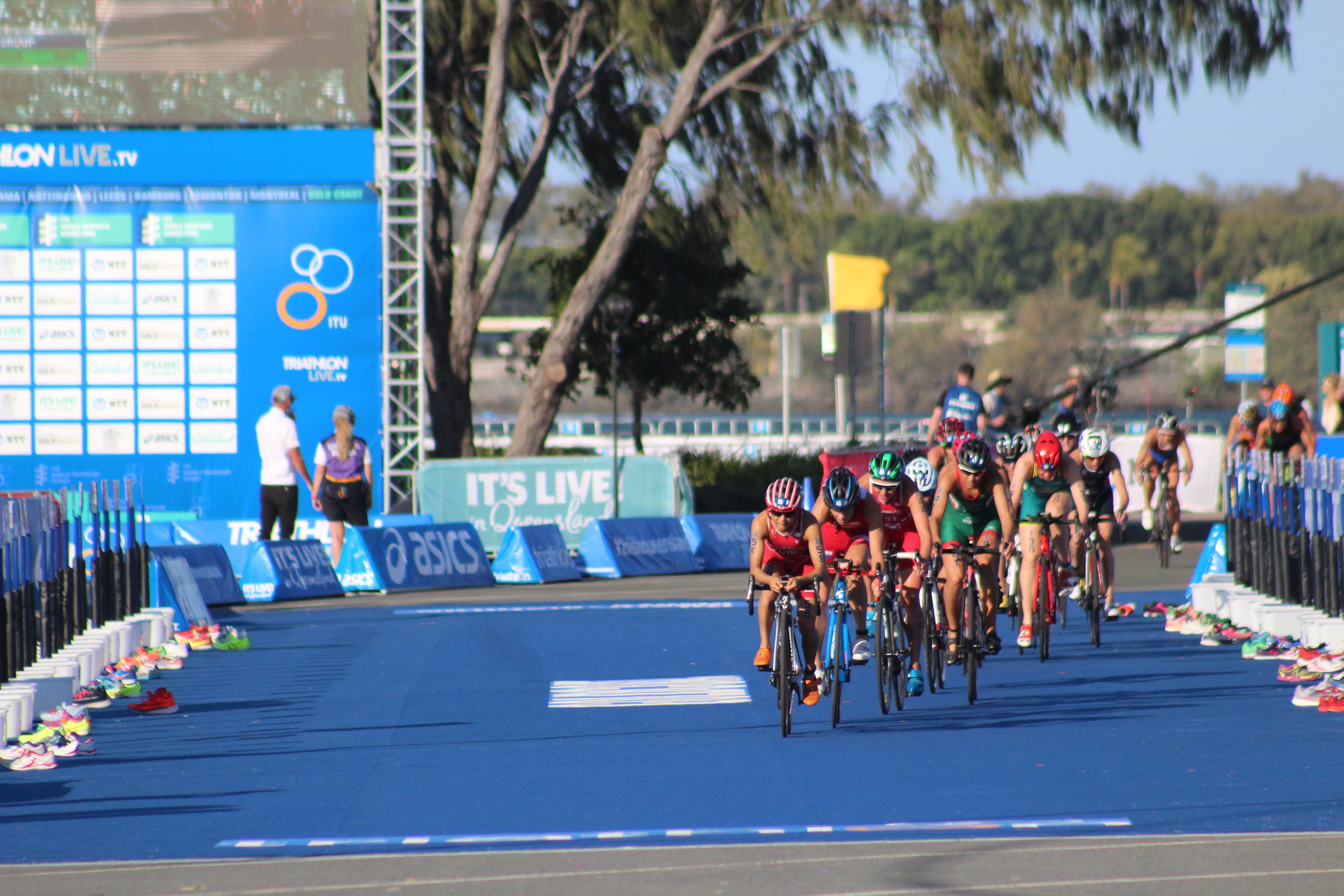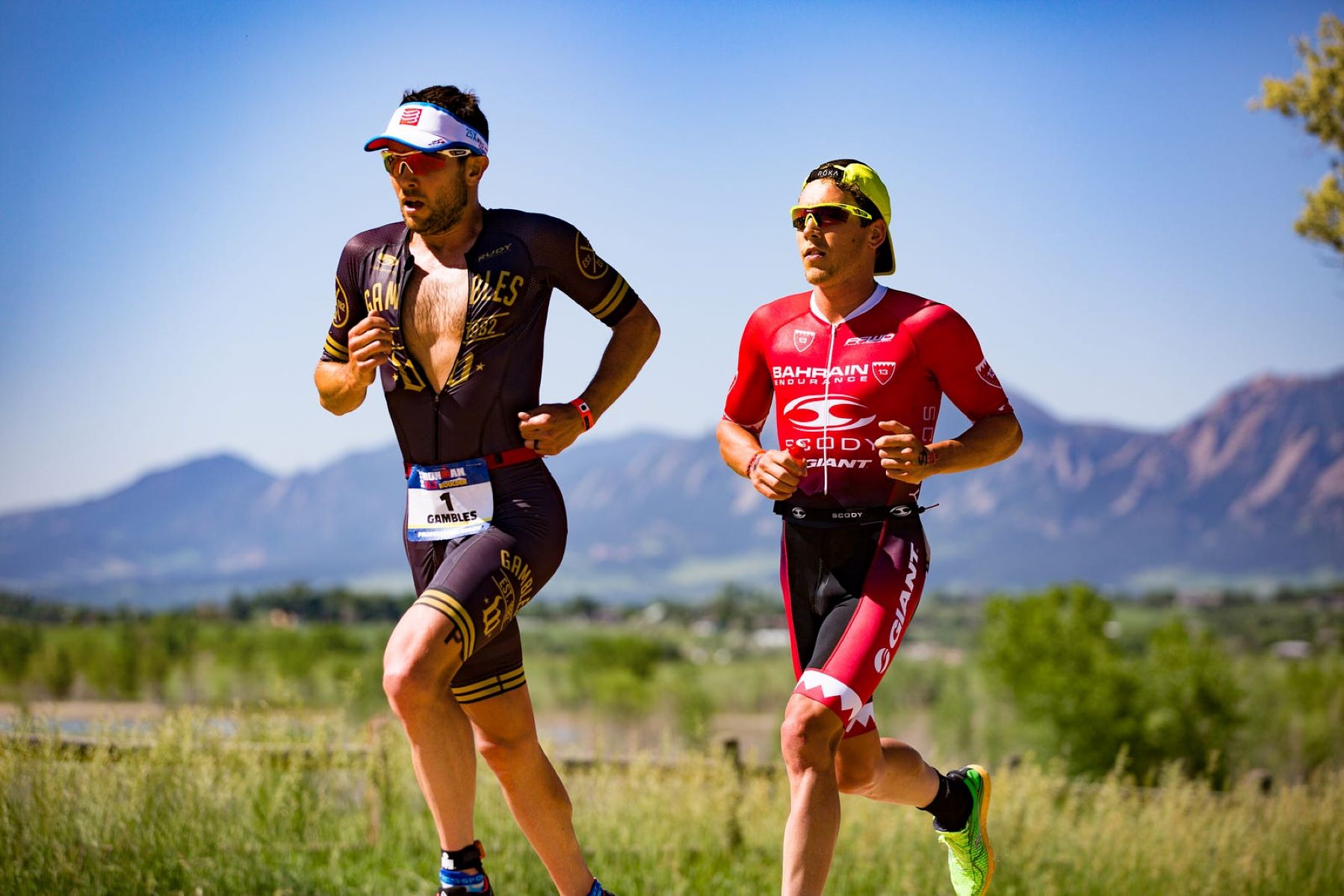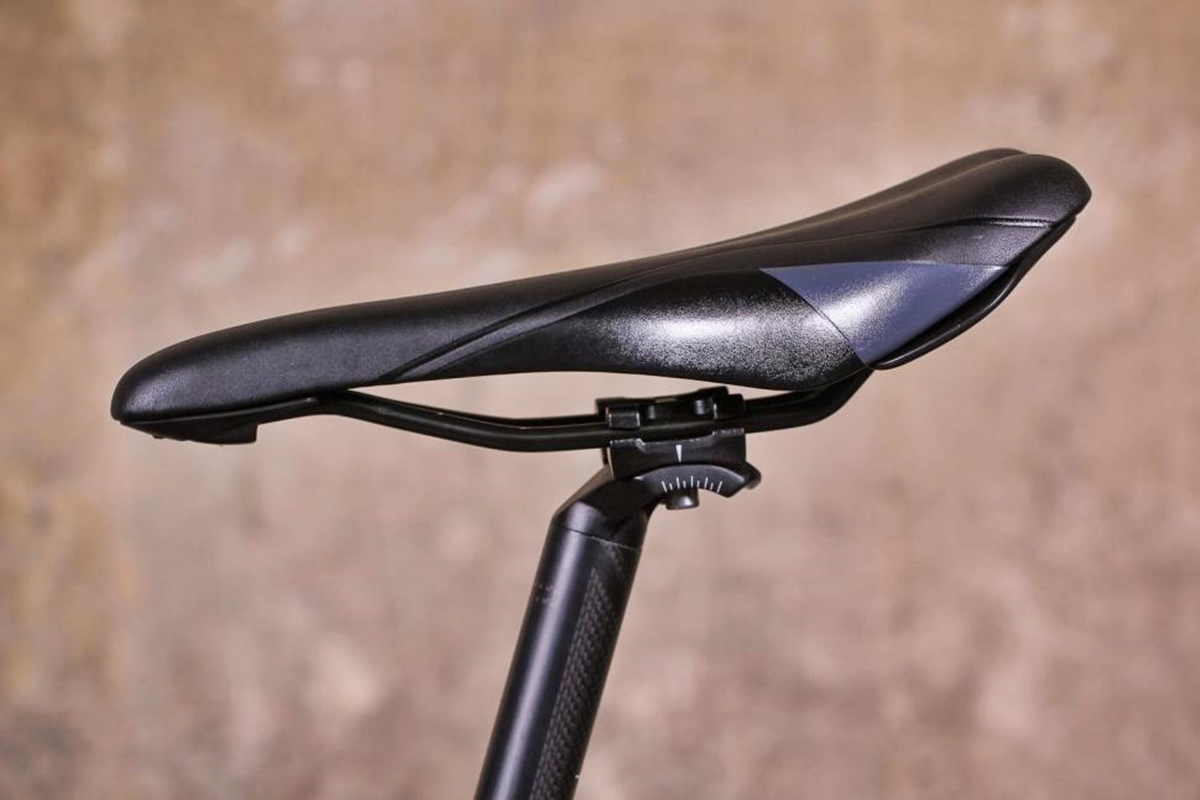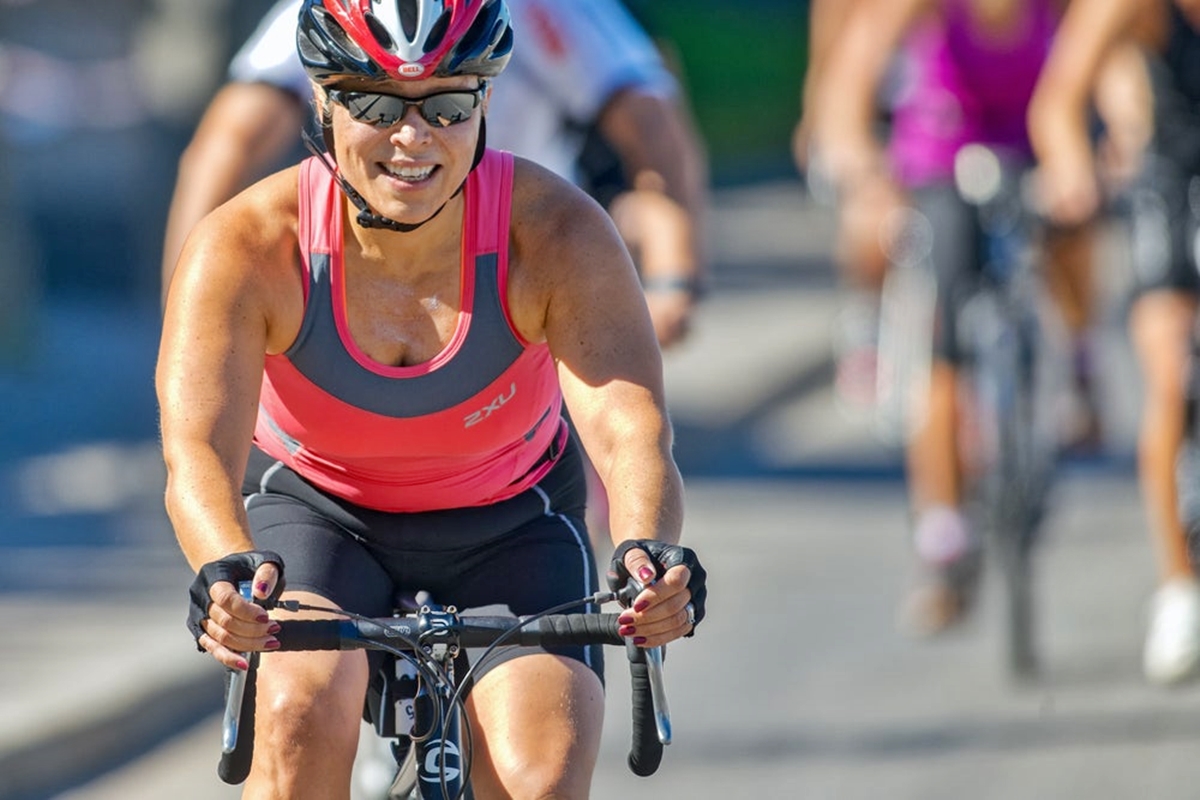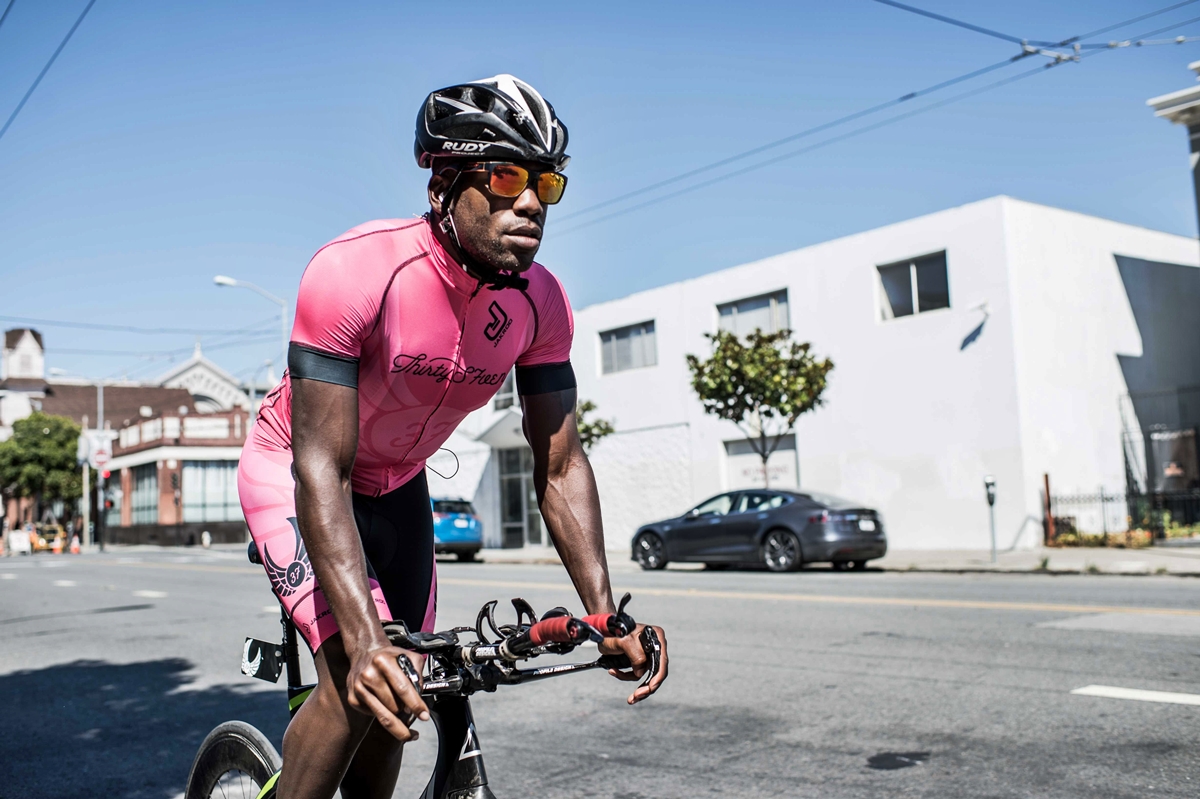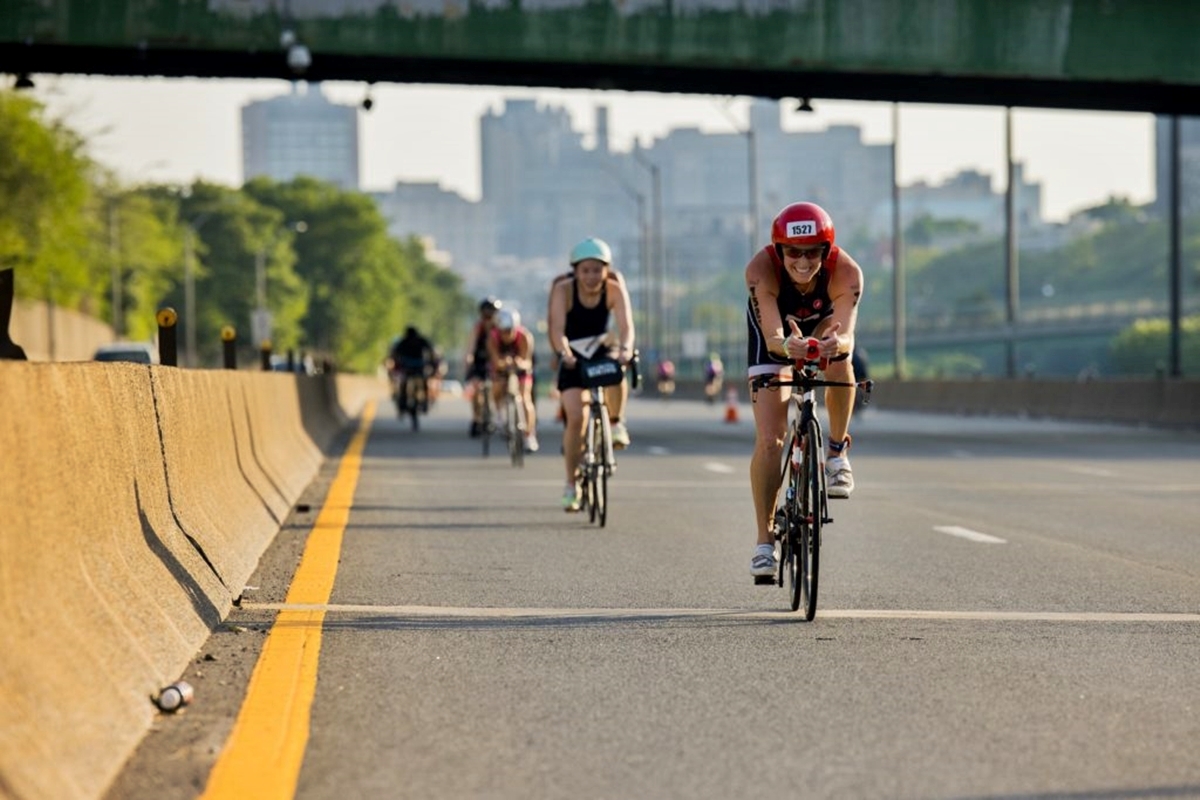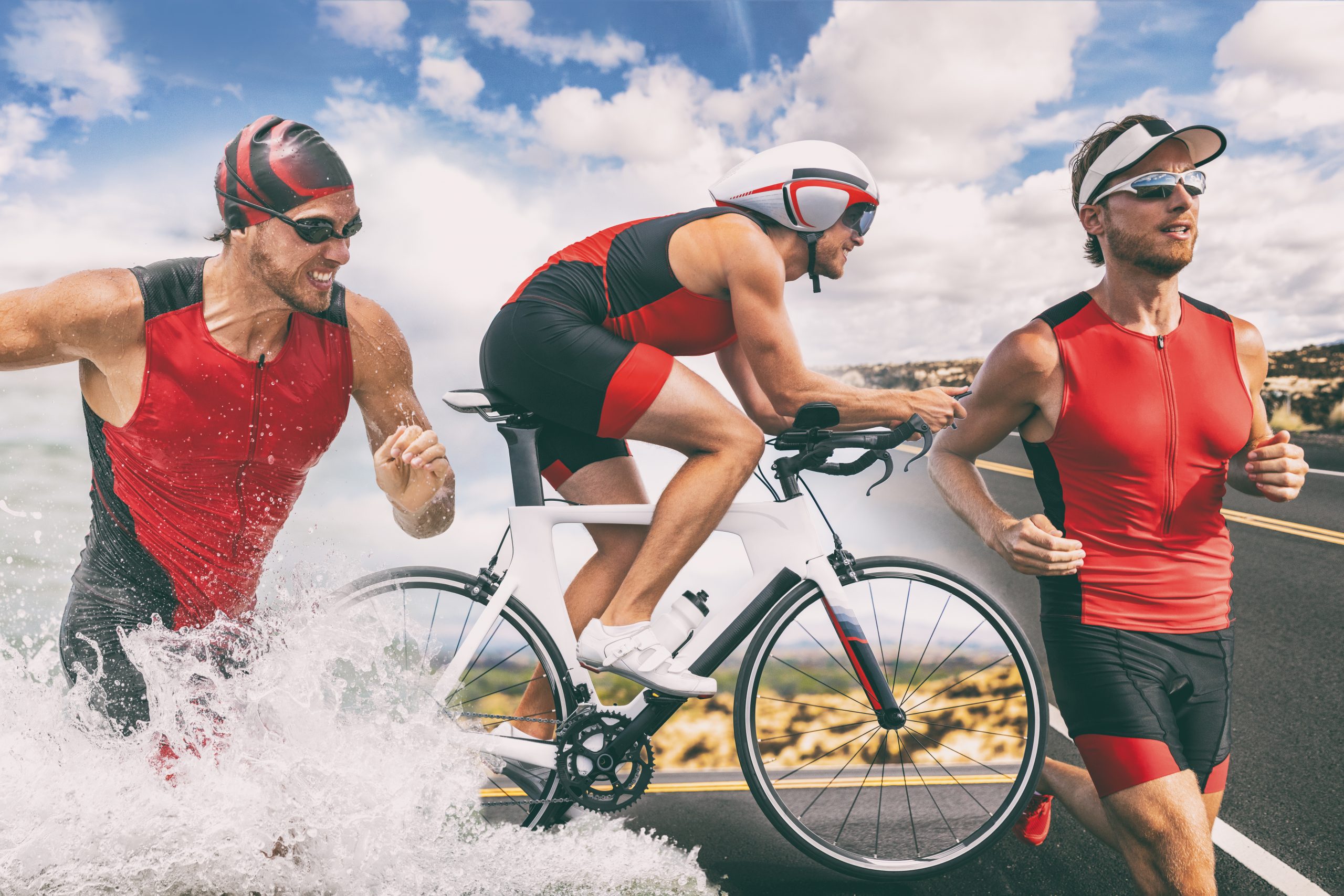

Featured
What Is A Triathlon Bike
Published: September 17, 2023
Discover the benefits of a Featured triathlon bike. Enhance your performance and conquer the race with this specialized cycling equipment.
Introduction
Welcome to the exciting world of triathlon! This multisport endurance event combines swimming, cycling, and running into one incredible race. As a triathlete, having the right equipment is crucial to your performance, and one key piece of equipment is the triathlon bike.
A triathlon bike, also known as a time trial (TT) bike, is specifically designed for the demands of triathlon races. Unlike traditional road bikes, which are more versatile and suited for various terrains, triathlon bikes are optimized for speed and aerodynamics.
Whether you’re a beginner looking to participate in your first triathlon or a seasoned triathlete aiming for a personal best, understanding the characteristics and features of a triathlon bike will help you make an informed decision when it comes to choosing the right bike for your needs.
In this article, we will explore the definition of a triathlon bike and delve into its various characteristics, components, and considerations. So, get ready to dive into the world of triathlon bikes and discover how they can take your performance to the next level!
Definition of a Triathlon Bike
A triathlon bike is a specialized type of bicycle designed specifically for triathlon races, which consist of swimming, cycling, and running segments. This type of bike is also commonly referred to as a time trial (TT) bike due to its focus on speed and aerodynamics.
Compared to traditional road bikes, triathlon bikes have several distinct features that make them uniquely suited for the demands of the sport. The most notable characteristic of a triathlon bike is its aerodynamic design. Every aspect of the bike’s frame and components is optimized to reduce wind resistance, allowing triathletes to achieve higher speeds with less effort.
Triathlon bikes typically feature a unique frame geometry to facilitate an aerodynamic riding position. The frame geometry is characterized by a steeper seat tube angle, which positions the rider further forward over the bottom bracket. This forward position helps to reduce wind resistance and engage the rider’s leg muscles more effectively.
Another key feature of a triathlon bike is the inclusion of aerodynamic handlebars. These handlebars, often referred to as “aero bars” or “tri-bars,” enable the rider to adopt a low and streamlined position that further reduces air resistance. The aero bars also provide multiple hand positions, allowing the triathlete to maintain a comfortable and efficient riding posture throughout the race.
In addition to the aerodynamic design, triathlon bikes are equipped with specific components tailored to the needs of triathletes. These components may include aero wheelsets, disc brakes for optimal stopping power, and a specific gearing system for efficient pedaling at high speeds.
Overall, a triathlon bike is a specialized piece of equipment designed to optimize a triathlete’s performance by reducing aerodynamic drag, improving speed, and enhancing efficiency. With its unique design and purpose-built features, a triathlon bike plays a crucial role in helping triathletes achieve their best possible race results.
Characteristics of a Triathlon Bike
Triathlon bikes are engineered with specific characteristics that differentiate them from traditional road bikes. These unique features are designed to maximize aerodynamics, enhance speed, and optimize performance for triathlon races. Let’s take a closer look at the key characteristics of a triathlon bike:
- Frame Geometry: The frame geometry of a triathlon bike is distinctive and purposeful. It typically features a steeper seat tube angle that positions the rider further forward over the bottom bracket. This geometry helps to reduce wind resistance and engages the rider’s leg muscles more effectively. The frame also tends to have a longer top tube, which allows for a more aggressive and aerodynamic riding position.
- Aero Positioning: An essential aspect of triathlon biking is achieving an aerodynamic body position. Triathlon bikes facilitate this by incorporating aerodynamic handlebars, commonly called aero bars or tri-bars. These handlebars allow for a low and streamlined position, reducing drag and optimizing speed. The aero bars also offer multiple hand positions, enabling the triathlete to find a comfortable and efficient riding posture throughout the race.
- Aerodynamic Features: Every aspect of a triathlon bike’s design is geared towards minimizing wind resistance. The frame tubes are often shaped with aerodynamic profiles, such as airfoil or teardrop shapes, to reduce drag. Internal cable routing and hidden brake calipers further enhance the bike’s aerodynamic properties. Some models even incorporate integrated storage solutions to maintain an efficient and sleek profile.
- Components: Triathlon bikes are equipped with components that have been purposefully selected to enhance performance. They typically come with a specific gearing system that allows for optimal power transfer and efficient pedaling at high speeds. This could include a larger cassette on the rear wheel with smaller chainrings on the front to enable the rider to maintain a steady cadence. Disc brakes are increasingly common on triathlon bikes, offering improved stopping power and modulation in all weather conditions.
These characteristics come together to create a machine that is finely tuned for speed, efficiency, and aerodynamics. A triathlon bike allows the triathlete to tap into their full potential, sparing no effort in their pursuit of fast times and personal achievements on the racecourse.
Frame Geometry
Frame geometry is a critical factor in the design of a triathlon bike, as it plays a crucial role in maximizing aerodynamics, power transfer, and rider comfort. Triathlon bikes are specifically engineered with frame geometry that is optimized for the demands of the sport. Here are some key aspects of triathlon bike frame geometry:
- Steeper Seat Tube Angle: The seat tube angle of a triathlon bike is typically steeper compared to traditional road bikes. This means that the seat tube is positioned more vertically, moving the rider’s position forward over the bottom bracket. The steeper seat tube angle places the rider in a more aerodynamic position, reducing drag and allowing for more efficient power transfer while pedaling.
- Longer Top Tube: Triathlon bikes often have longer top tubes compared to road bikes. The longer top tube extends the reach of the bike, allowing the rider to achieve a more aggressive and aerodynamic position. This elongated position, combined with the forward placement of the seat tube, helps to streamline the rider’s body and minimize wind resistance.
- Lower Bottom Bracket: To further enhance stability and handling, triathlon bikes have a lower bottom bracket compared to road bikes. The lower bottom bracket provides a lower center of gravity, resulting in improved cornering and maneuverability. This lower position also helps transfer power more efficiently to the pedals.
- Integrated Forks: Many triathlon bikes feature integrated forks, which means that the fork is integrated into the frame rather than being a separate component. This design not only reduces weight but also improves the bike’s aerodynamics by reducing drag around the front wheel area.
- Adjustable Components: Some triathlon bikes include adjustable components, such as seat posts and aero bars, to allow for fine-tuning of rider position. These adjustments enable triathletes to find the optimal balance between aerodynamics, power output, and comfort.
The specific frame geometry of a triathlon bike is carefully engineered to provide the rider with a balanced blend of aerodynamics, power transfer, and stability. By optimizing the rider’s position on the bike, triathlon bikes allow for greater efficiency and speed, enabling triathletes to perform at their best on the bike leg of the race.
Aero Positioning
A crucial aspect of triathlon biking is achieving an aerodynamic body position, known as aero positioning. Triathlon bikes are designed to facilitate this optimal position, allowing the rider to minimize wind resistance and maximize speed. Here are the key elements of aero positioning on a triathlon bike:
- Aero Bars: One of the defining features of a triathlon bike is the inclusion of aerodynamic handlebars, commonly called aero bars or tri-bars. These handlebars extend horizontally from the front of the bike and allow the rider to adopt a low and streamlined position. The aero bars typically have padded armrests and handgrips that provide multiple hand positions for comfort and control.
- Aerodynamic Profile: When in aero positioning, the rider’s body forms a more compact and streamlined shape compared to riding upright. The torso is lowered, the back is flat, and the head is lowered to be in line with the spine. This profile reduces frontal surface area, minimizing wind resistance and allowing the bike to cut through the air more efficiently.
- Elbows Tucked In: In aero positioning, the elbows are tucked in towards the body, reducing the width of the rider and further enhancing aerodynamics. This position helps to minimize turbulence and drag caused by the arms when riding at higher speeds.
- Hip Angle and Flexibility: Achieving an optimal hip angle is important in aero positioning. A relaxed and flexible hip angle allows the rider to generate power while maintaining an aerodynamic posture. Proper flexibility and core strength are crucial to achieving and sustaining the desired hip angle.
- Breathing Technique: Breathing during aero positioning can be challenging due to the compressed position of the chest and reduced space for the diaphragm to expand. Triathletes often adopt rhythmic breathing patterns, focusing on full exhalations and using quick inhalations to ensure a steady supply of oxygen while minimizing disruption to their aerodynamic profile.
Achieving an efficient and sustainable aero positioning requires practice and adaptability. Triathletes must find the right balance between comfort, power output, and aerodynamics. Regular training and simulation of race conditions can help triathletes refine their aero positioning and find the optimal posture to maximize speed and efficiency.
Aerodynamic Features
Aerodynamics play a crucial role in the design of triathlon bikes, as reducing air resistance can significantly improve speed and performance. Manufacturers incorporate various aerodynamic features into triathlon bikes, each with the goal of minimizing drag and optimizing efficiency. Here are some common aerodynamic features found on triathlon bikes:
- Aero Frame Tubes: Triathlon bikes often feature frame tubes with aerodynamic profiles, such as airfoil or teardrop shapes. These specially designed tube shapes help to reduce turbulence and minimize drag as the bike moves through the air. The frame tubes are strategically positioned and engineered to create a smooth airflow around the bike.
- Hidden Brake Calipers: To further enhance aerodynamics, many triathlon bikes come equipped with hidden brake calipers. These calipers are positioned behind the fork or under the chainstays, effectively sheltering them from the wind. By minimizing the frontal area exposed to the wind, hidden brake calipers help to reduce drag and improve overall aerodynamic efficiency.
- Integrated Cockpits: Triathlon bikes often feature integrated cockpit systems, where the stem, handlebars, and cables are designed to seamlessly blend into the overall frame design. This integration helps to minimize exposed cables and reduce drag, creating a smoother and more aerodynamic profile.
- Aero Wheels: The choice of wheels can significantly impact the aerodynamics and overall performance of a triathlon bike. Aero wheels are designed with deep rims and streamlined profiles to reduce wind resistance and increase stability. These wheels help to smooth the airflow over the bike, reducing drag and allowing for more efficient speed on the racecourse.
- Aero Seat Posts and Seat Stays: The seat post and seat stays on a triathlon bike are often designed with aerodynamics in mind. Seat posts may be shaped to follow the contours of the leading edge of the seat tube, while seat stays are often positioned close to the rear wheel to reduce turbulence and drag. These features contribute to the bike’s overall aerodynamic efficiency.
These aerodynamic features collectively work to minimize drag, enhance speed, and optimize performance on a triathlon bike. By carefully integrating these features into the design, manufacturers strive to create bikes that offer the greatest aerodynamic advantage for triathletes.
Components
The components of a triathlon bike are carefully selected and designed to enhance performance, efficiency, and reliability. These components are tailored to the specific needs of triathletes, who demand a high level of functionality and durability. Let’s explore the key components commonly found on triathlon bikes:
- Gearing System: Triathlon bikes typically feature a specific gearing system that allows for efficient pedaling at high speeds. The gear ratios are often optimized to maintain a steady cadence while providing a wide range of choices for tackling different terrain and gradients. This enables triathletes to sustain their rhythm and power output throughout the bike leg of the race.
- Aero Wheelsets: Aero wheelsets are a popular choice for triathlon bikes due to their aerodynamic design and reduced drag. These wheels have deeper rims and streamlined profiles, allowing air to flow smoothly around them. Aero wheelsets not only enhance aerodynamics but also offer improved stability and increased speed, making them ideal for triathlon racing.
- Disc Brakes: Disc brakes have gained popularity in triathlon bikes due to their superior stopping power and modulation, especially in wet or challenging conditions. Disc brakes provide consistent and reliable braking performance, allowing for more precise control and faster deceleration when needed. This is essential for triathletes who often face varying weather conditions and technical courses.
- Saddles: Triathlon saddles are designed to provide comfort and support while maintaining an aerodynamic position. They typically have a shorter and wider profile with added padding to accommodate the forward pelvic tilt commonly found in aero positioning. Triathlon saddles also tend to have cutouts or pressure relief channels to reduce perineal pressure and prevent numbness during long rides.
- Cranksets and Pedals: Cranksets on triathlon bikes are typically designed for optimal power transfer and rigidity. Triathletes often prefer cranksets with larger chainrings for higher top-end speed. Pedals can vary depending on personal preference and cycling style, but many triathletes opt for clipless pedals for efficient power transfer and quick transitions between biking and running.
These components, along with others such as derailleurs, chain, cassette, and handlebar shifters, come together to create a purpose-built machine that performs reliably under the demanding conditions of triathlon racing. The careful selection and integration of these components ensure that triathletes have the tools they need to push the boundaries of their performance on the bike leg of the race.
Wheels
Wheels are a critical component of any triathlon bike, greatly impacting its overall performance and ride quality. Triathlon-specific wheels are designed with specific aerodynamic features and materials to maximize speed and efficiency. Let’s explore the importance of wheels in triathlon biking:
Aerodynamic Design: Triathlon bike wheels are typically designed with aerodynamics in mind. The rims feature deeper profiles, which reduce drag by creating a smoother airflow over the wheels. This aerodynamic design helps triathletes maintain higher speeds with less effort and improves overall race performance.
Weight: The weight of the wheels also plays a significant role in triathlon biking. Lighter wheels can improve acceleration and climbing ability, allowing for faster bursts of speed and efficient energy transfer. However, it’s important to find a balance between lightweight and durability to ensure the wheels can withstand the demands of triathlon racing.
Material: The choice of wheel material affects both performance and durability. Carbon fiber wheels are popular in triathlon due to their lightweight nature, excellent aerodynamics, and stiffness. Carbon fiber wheels offer optimal power transfer, dampen road vibrations, and are resistant to corrosion. Aluminum alloy wheels, while slightly heavier, can still provide good performance at a more affordable price point.
Depth: Wheel depth refers to the height of the rim, and it plays a role in aerodynamics and handling. Deeper rims offer better aerodynamic performance by reducing drag, especially in crosswinds. However, deeper rims can be more affected by strong winds and may be harder to handle in gusty conditions. Many triathletes opt for wheels with a depth between 40-60mm for a balanced mix of aerodynamics and handling.
Tire Compatibility: Another consideration is tire compatibility. Triathlon bike wheels usually accommodate clincher or tubeless tires. Clincher tires are the most common and are easier to change in case of a flat. Tubeless tires offer lower rolling resistance and improved puncture resistance but may require additional setup and maintenance.
Braking Performance: It’s essential to consider the braking performance of the wheels. Rim brake wheels require brake pads to grip the rim’s braking surface, while disc brake wheels use the disc rotor for stopping power. Disc brakes generally offer superior braking performance and modulation, especially in wet conditions, but require the bike frame and fork to be disc brake compatible.
Overall, selecting the right wheels for your triathlon bike is crucial to enhance performance, aerodynamics, and handling. The choice of wheel depth, material, weight, and tire compatibility should be aligned with your racing goals and personal preferences, ensuring you have the best tools to optimize your performance on the bike leg of the triathlon.
Brakes
Brakes are a crucial component of any triathlon bike, providing the necessary stopping power and control during races and training rides. The choice of brakes can impact overall performance, safety, and maintenance requirements. Let’s delve into the different types of brakes commonly found on triathlon bikes:
Rim Brakes: Rim brakes are the traditional type of brakes found on many road and triathlon bikes. They work by applying pressure directly to the rim’s braking surface, using brake pads. When the brake levers are squeezed, the brake pads clamp onto the rim, creating friction and slowing down the bike. Rim brakes are lightweight, easy to maintain, and typically provide adequate stopping power for most triathlon events.
Disc Brakes: Disc brakes are becoming increasingly popular in the world of triathlon. These brakes use a rotor attached to the wheel hub. When the brake levers are actuated, brake calipers squeeze brake pads against the rotor, creating friction and slowing down the bike. Disc brakes offer several advantages, including enhanced stopping power, consistent performance in wet conditions, better modulation, and improved heat dissipation on long descents. They provide triathletes with greater control and confidence, especially in challenging terrain or adverse weather.
Hydraulic vs. Mechanical: Disc brakes are available in two variants: hydraulic and mechanical. Hydraulic disc brakes use hydraulic fluid to transmit force from the brake levers to the brake calipers, providing smooth and powerful braking performance with minimal effort. Mechanical disc brakes, on the other hand, use cables to transmit force, requiring more hand strength to achieve the same braking power. Hydraulic disc brakes are generally preferred for their superior performance, while mechanical disc brakes are easier to maintain and adjust.
Considerations: When choosing brakes for your triathlon bike, there are a few factors to consider. Disc brakes offer better all-weather performance and are often more reliable in extreme conditions, such as heavy rain. Rim brakes, while not as effective in wet conditions, are lighter, more budget-friendly, and easier to maintain. However, it’s important to ensure compatibility with the frame and fork when choosing disc brakes, as these require specific mounting points.
UCI Regulations: It’s worth noting that if you plan to compete in triathlons governed by the Union Cycliste Internationale (UCI), disc brakes may have restrictions. At the time of writing, UCI regulations permit the use of disc brakes in road races, but they are prohibited in UCI-sanctioned time trial events. Check the race regulations to ensure compliance with any restrictions on brake type.
Ultimately, the choice between rim brakes and disc brakes for your triathlon bike depends on factors such as personal preference, budget, race conditions, and UCI regulations. Both types of brakes have their advantages, and the decision should be based on what will best suit your needs and provide you with the confidence to tackle the bike leg of your triathlon successfully.
Gearing
Gearing plays a significant role in the performance and versatility of a triathlon bike. The choice of gearing can affect a triathlete’s ability to maintain an optimal cadence, climb efficiently, and achieve desired speed on different terrains. Let’s explore the key aspects of gearing in triathlon bikes:
Gear Ratios: Triathlon bikes are typically equipped with a specific gearing system optimized for the demands of the sport. The gear ratios are designed to allow triathletes to maintain a steady cadence while delivering power efficiently across various terrains. The selection of gear ratios may vary depending on personal preference, course profile, and the individual’s strength and fitness level.
Cassette Options: The cassette, located on the rear wheel, determines the range of gear options available. In triathlon, it’s common to find cassettes with a wider range of gears, allowing for both high-end speed and low cadence climbing. Triathletes often opt for larger rear cogs, providing lower gears for tackling steep climbs or headwinds while maintaining a comfortable and controlled pedaling rhythm.
Chainrings: The chainrings, located on the crankset, also play a role in the gearing of a triathlon bike. The choice of chainrings can impact the bike’s overall gear range. Triathlon bikes typically have larger chainrings, commonly referred to as “big rings,” allowing for higher top-end speed and more efficient pedaling on flats and descents.
Shifting Mechanism: Triathlon bikes are equipped with dedicated shifters, usually integrated into the brake levers or placed at the ends of the aero bars. These shifters allow for quick and precise gear changes without requiring the triathlete to change hand positions. Smooth and reliable shifting is essential to maintain cadence and rhythm, especially during fast-paced races.
Electronic Shifting: Electronic shifting systems, such as Shimano Di2 or SRAM eTap, have become increasingly popular in triathlon bikes. These systems use electronic signals to control gear changes rather than traditional mechanical cables. Electronic shifting offers precise and consistent shifting across all gears, with the added benefit of customizable shifting patterns and easier operation, especially during challenging race conditions.
Considerations: When considering the gearing for your triathlon bike, factors such as your race distances, course profiles, and individual strengths should be taken into account. It’s crucial to have a gearing setup that allows you to comfortably maintain your desired cadence while still providing the necessary range for different sections of the race.
Working with a knowledgeable bike fitter or coach can help you fine-tune your gear ratios to optimize your performance and ensure efficient power transfer throughout all stages of your triathlon races.
Fit and Comfort
Fit and comfort are essential considerations when choosing and riding a triathlon bike. Achieving the proper fit ensures optimal power transfer, efficiency, and reduces the risk of discomfort or injury during long rides and races. Here are key factors that contribute to fit and comfort on a triathlon bike:
Bike Fit: A proper bike fit is critical to ensure that the triathlon bike suits your individual body dimensions, flexibility, and riding style. Working with a professional bike fitter can help you find the right frame size, adjust saddle height and position, customize handlebar reach and drop, and optimize pedal cleat placement. A good fit ensures efficient power transfer, reduced strain on joints, and improved aerodynamics.
Saddle: The saddle is a crucial component when it comes to comfort on a triathlon bike. Triathlon saddles are designed to offer support and reduce pressure on sensitive areas, allowing for extended periods of comfortable riding. It’s important to find a saddle that suits your anatomy, riding position, and personal preferences. Some triathlon saddles have cutouts or pressure relief channels to further alleviate perineal pressure and numbness.
Handlebars and Aero Positioning: The handlebars on a triathlon bike, usually in the form of aero bars or tri-bars, allow for a more aerodynamic riding position. Finding a comfortable and sustainable position on the aero bars is essential, as it can reduce strain on the neck, shoulders, and lower back. Regular flexibility exercises and core strength training can help improve your ability to hold an aero position comfortably.
Vibration Dampening: Triathlon bikes often incorporate features aimed at reducing road vibrations, such as carbon fiber frames, seatposts, and handlebars. These materials help dampen vibrations, leading to a smoother and more comfortable ride. Additionally, thicker bar tape and wider tires can further absorb road chatter and enhance overall comfort on rough road surfaces.
Triathlon-Specific Apparel: Wearing triathlon-specific apparel can contribute to comfort on the bike. Triathlon shorts or suits are designed to provide padding and reduce friction during the bike leg. Moisture-wicking materials help manage sweat, while seamless construction minimizes chafing. Properly fitting cycling shoes with efficient ventilation and support can also enhance comfort and power transfer.
Regular Adjustments and Maintenance: As you spend more time on your triathlon bike, it’s important to regularly review and adjust your bike fit as needed. Components may need occasional fine-tuning, such as tightening handlebar bolts or adjusting saddle position. Regular maintenance, including lubrication and cleaning, can also help ensure smooth operation and prevent discomfort caused by mechanical issues.
Remember that every individual is unique, and what works for one person may not work for another. Seeking professional guidance and regularly assessing your bike fit and comfort will help you find the optimal setup and position for long-lasting, enjoyable, and successful triathlon bike rides and races.
Transition Considerations
Transitions in triathlon races can make a significant difference in overall race times. As you transition from the swim to the bike leg and then from the bike to the run, efficiency and organization can play a crucial role. Here are some key transition considerations to keep in mind when it comes to your triathlon bike:
Transition Area Setup: Arranging your transition area strategically can save you valuable time during transitions. Place your bike on a sturdy bike rack and ensure that it is securely positioned. Familiarize yourself with the layout of the transition area, including the entrance and exit points, to streamline your movements.
Mount and Dismount Techniques: Mastering smooth mount and dismount techniques for your triathlon bike is essential. Practice mounting your bike quickly and efficiently, utilizing the aero bars if you have them. When dismounting, approach the dismount line at a controlled speed, unclip your shoes in advance, and come to a complete stop before stepping off your bike.
Shoe Selection: Consider footwear options that will allow for a quick and seamless transition from the bike to the run. Some triathletes prefer wearing cycling shoes with the ability to attach their running shoes to the bike. Others opt for triathlon-specific cycling shoes that have a quick-entry design and a comfortable sockless option for the run segment.
Bike Tidiness: Keep your triathlon bike clean and clutter-free. Remove unnecessary accessories or items that may hinder your transitions. Ensure that your water bottles are properly secured and easily accessible. Consider pre-loading bottle cages or using a hydration system that allows for easy and quick access during the bike leg.
Avoiding Mechanical Issues: Regular bike maintenance is crucial, especially before a race. Conduct a thorough inspection of your triathlon bike, checking for any loose bolts, tire pressure, and functioning brakes. Proper gear indexing and a well-lubricated drivetrain will minimize the risk of mechanical issues during the race.
Practice Transitions: Practice your transitions during training sessions to build efficiency and confidence. Incorporate simulated race scenarios to familiarize yourself with quickly moving from swim to bike and bike to run. Time yourself during practice sessions to identify areas for improvement and develop a routine that will help you execute smooth and swift transitions on race day.
By paying attention to these transition considerations and practicing your transitions, you can shave off valuable seconds or even minutes from your overall race time. Being organized, prepared, and efficient during transitions can give you a competitive edge and contribute to a successful triathlon race experience.
Training and Racing with a Triathlon Bike
Navigating a triathlon bike effectively during training sessions and races requires a specific mindset and approach. Adopting the right training strategies and race strategies can maximize your performance on the bike leg. Here are some key considerations for training and racing with a triathlon bike:
Specificity: To excel on the bike leg, it’s crucial to include specific triathlon bike workouts in your training plan. Focus on building endurance, improving speed, and developing muscular and cardiovascular strength. Incorporate interval training, hill repeats, and tempo rides to simulate race conditions and improve your overall bike fitness.
Brick Workouts: Brick workouts, involving a bike ride immediately followed by a run, are essential for conditioning your body for the bike-to-run transition. These workouts teach your muscles and cardiovascular system to adapt to the demands of running after biking, helping you maintain pace and minimize fatigue during the run leg of the race.
Pacing and Strategy: Develop a pacing strategy to maintain a consistent effort throughout the bike leg. Avoid starting too hard to conserve energy for the subsequent run. Consider your target race distance, course profile, and weather conditions when formulating a race strategy. Familiarize yourself with the racecourse elevation and plan for pacing variations accordingly.
Drafting Rules: Familiarize yourself with the drafting rules of your race. Drafting, or closely following another cyclist to gain an unfair advantage, is typically illegal in most triathlon races. Understand the permitted distance and passing rules to ensure fair competition and avoid penalties.
Triathlon Bike Handling: Practice bike handling skills to improve your confidence and control on the bike. Develop your ability to corner, descend, and handle different road conditions with ease. Familiarizing yourself with the specific handling characteristics of your triathlon bike will enable you to navigate turns and obstacles efficiently, ensuring a smooth and safe ride.
Fueling and Hydration: Proper nutrition and hydration are vital during training and racing. Practice your nutrition and hydration strategies during long training rides to determine what works best for you. Pre-plan your fueling strategy to ensure you maintain adequate energy levels throughout the bike leg while avoiding digestive issues.
Race-Day Bike Check: Before the race, perform a thorough check of your bike to ensure it is in optimal working condition. Verify tire pressure, brake functionality, and gear shifting. Make sure all bolts are tightened, and your bike is clean and well-lubricated. Familiarize yourself with any last-minute course updates or potential hazards that may affect your race-day strategy.
Training diligently and implementing effective race strategies will enhance your performance on the bike leg of a triathlon. By focusing on specificity, refining your bike handling skills, and dialing in your nutrition and hydration, you can maximize your potential and achieve your goals when racing with a triathlon bike.
Conclusion
In conclusion, the triathlon bike is a specialized piece of equipment designed to enhance the performance of triathletes in the bike leg of their races. With its unique characteristics such as aerodynamic frame geometry, aero positioning, and aerodynamic features, the triathlon bike maximizes speed, efficiency, and power transfer. Components like wheels, brakes, and gearing are carefully selected to optimize performance and ensure a comfortable ride.
Fit and comfort are essential factors to consider when choosing a triathlon bike. A proper bike fit, saddle selection, and handlebar positioning all contribute to an efficient and comfortable riding experience. Additionally, transition considerations, such as setting up the transition area, practicing mount and dismount techniques, and maintaining an organized and functional bike setup, can help triathletes save valuable time during transitions.
Training and racing with a triathlon bike require a specific approach. Specificity in training, incorporating brick workouts, and developing race strategies are key for improving bike performance. Bike handling skills, understanding drafting rules, and optimizing fueling and hydration strategies further enhance race-day performance.
By understanding the features, characteristics, and considerations associated with triathlon bikes, triathletes can make informed decisions when selecting their equipment and optimizing their performance. Remember, each triathlete is unique, so it’s important to find the right combination of factors that work best for you in terms of comfort, efficiency, and race performance. With the right combination of training, practice, and equipment, you can unlock your full potential on the bike leg of your triathlon journey.
